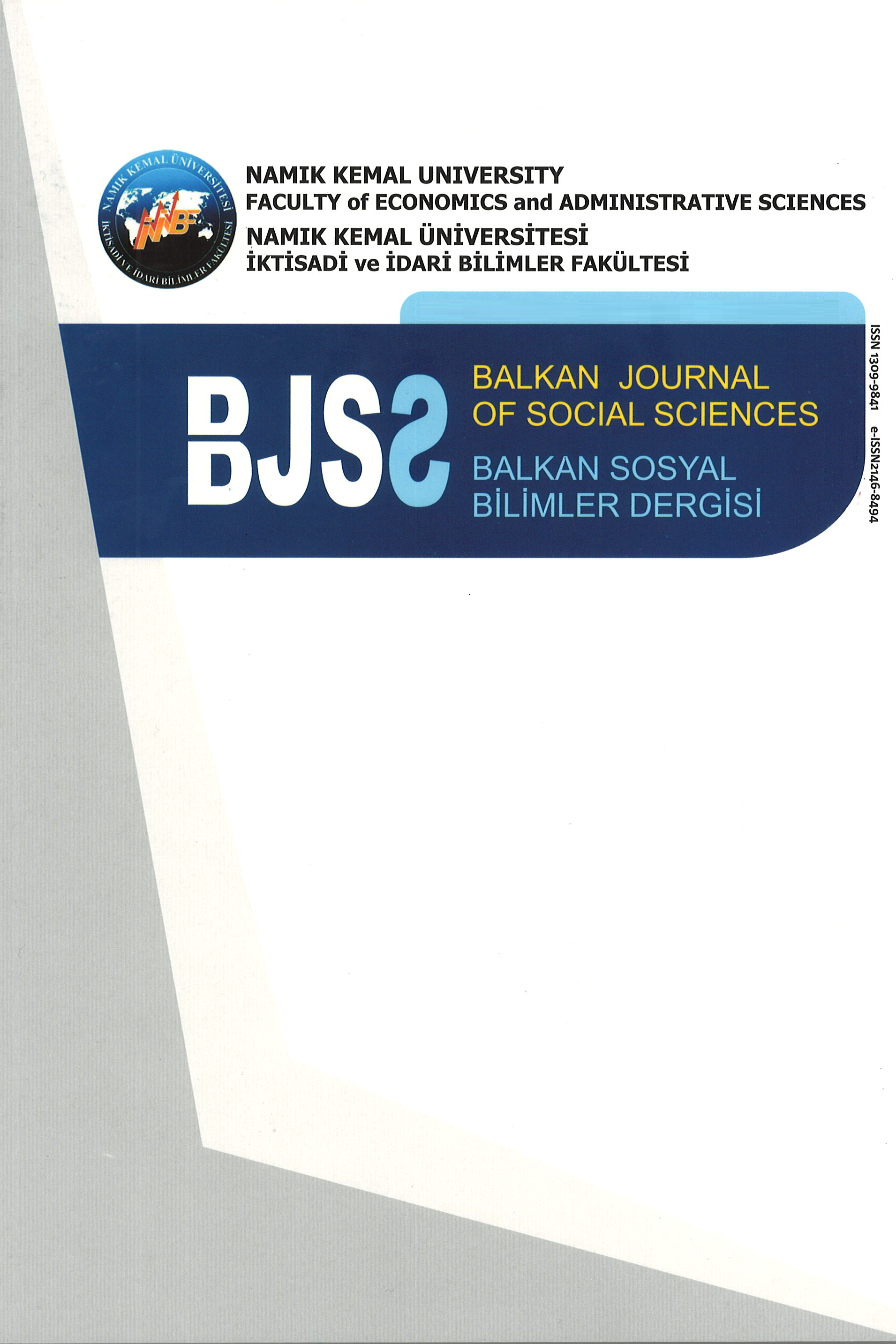Merkez Bankalarının İletişimi ve Para Politikası: Avrupa Merkez Bankası Örneği
Para politikasında şeffaflık 1990’ların başlarından itibaren dünya çapında önem kazanmıştır. Merkez bankaları günümüzde hedeflerini, stratejilerini, aldığı kararları ve ekonomik görünüme ilişkin değerlendirmelerini açıklamaya çok daha fazla zaman harcamakta ve tüm bunların gerçekleştirilmesi için de çeşitli iletişim kanallarından faydalanmaktadır. Etkili bir iletişim yardımıyla beklentileri yönlendirmek mümkün olmakta ve bu sayede para politikasının etkinliği artmaktadır. İletişimin para politikasının etkinliği üzerindeki rolünün anlaşılmasının bir sonucu olarak merkez bankaları bugün halk ile iletişimi stratejik bir unsur olarak görmektedir. Bu çalışmanın amacı merkez bankası iletişiminin para politikasının etkililiği açısından önemini Avrupa Merkez Bankası örneğinde incelemektir. Euro Bölgesi kompleks, sürekli değişen ve dolayısıyla belirsizliğin hüküm sürdüğü bir bölgedir. Bu nedenle Avrupa Merkez Bankası’nın farklı hedef kitlelerine yönelmesi ve çeşitli iletişim kanallarını kullanması önemli bir gerekliliktir. İletişim konusunda ileri bir düzeyde olan Avrupa Merkez Bankası’nın kullanmakta olduğu başlıca iletişim kanalları arasında aylık basın toplantıları, düzenli bültenler, konuşmalar, röportajlar, akademik konferans ve araştırmalar ve internet sitesi yer almaktadır.
Anahtar Kelimeler:
Merkez Bankasının İletişimi, Para Politikası, Avrupa Merkez Bankası
Central Bank Communication and Monetary Policy: The Case of European Central Bank
Transparency in monetary policy has gained worldwide importance from the early 1990s. Central banks now spend more time in explaining their objectives, strategies, decisions and assessments of the economic outlook. For the realization of all these, central banks benefit from various communication channels. With the help of an effective communication it is possible to direct the expectations and thus the effectiveness of monetary policy is increasing. After the role of communication on the effectiveness of monetary policy is understood, central banks have started to see the communication with the public as a strategic element. The aim of this study is to examine the importance of central bank communication in terms of the effectiveness of monetary policy in the case of European Central Bank. The Euro area is a complex and constantly changing region in which uncertainty prevails. For this reason, it is an important requirement for the European Central Bank to focus on different target groups and use various communication channels. The communication channels of the European Central Bank, which is in a superior position in terms of communication, are as follows; monthly press conferences, regular press releases, speeches, interviews, academic conferences and researches and website.
___
- Blinder, A. S., Ehrmann M., Fratzscher M., De Haan J., & Jansen D. (2008). Central bank communication and monetary policy: A survey of theory and evidence. ECB Working Paper, No: 898, May, 1-54.
- Brand, C., Buncic, D., & Turunen, J. (2006). The impact of ECB monetary policy decisions and communication on the yield curve. ECB Working Paper Series, No: 657, July, 1-33.
- Bulir, A., Cihak, M., & Smidkova, K. (2012). Writing clearly: The ECB’s monetary policy communication. German Economic Review, 14 (1), 50-72.
- Cengiz, V. (2011). Merkez bankalarının Eurosistem’e entegrasyonu: TCMB’nin bağımsızlığı üzerine bir değerlendirme. İstanbul: Değişim Yayınları.
- Demiralp, S., Kara, H., & Özlü, P. (2012). Monetary policy communication in Turkey. European Journal of Political Economy, 28, 540-556.
- Ehrmann, M., & Fratzscher, M. (2005). How should central banks communicate?. ECB Working Paper, No: 557, November, 1-41.
- Ehrmann, M., & Fratzscher, M. (2007). The timing of central bank communication. European Journal of Political Economy, 23, 124-145.
- Erdoğan, S., & Yıldırım, D. Ç. (2009). Türkiye’de Faiz Kanalı ile Parasal Aktarım Mekanizması. Eskişehir Osmangazi Üniversitesi İİBF Dergisi, 4(2), 57-72.
- Europäische Zentralbank (2006). Die Europäische Zentralbank das Eurosystem das Europäische System der Zentralbanken. Frankfurt: Europäische Zentralbank.
- European Central Bank (2001). The external communication of the European Central Bank. Monthly Bulletin, February, 59-65.
- European Central Bank (2007). Communicating monetary policy to financial markets. Monthly Bulletin, April, 61-71.
- European Central Bank (2009). Central bank communication in periods of heightened uncertainty. Monthly Bulletin, November, 71-79.
- Frenkel, M., Pierdzioch, C., & Stadtmann, G. (2006). The transparency of the ECB policy: What can we learn from its foreign exchange market interventions?. Journal of Policy Modelling, 28, 141-156.
- Geraats, P. M. (2010). Talking Numbers: Central Bank Communications on Monetary Policy and Financial Stability. In: 5th ECB Statis tics Conference, 19-20 October.
- Jeenneau, S. (2009). Communication of monetary policy decisions by central banks: What is revealed and why”. BIS Papers, No: 47, May, 1-38.
- Rosa, C., & Verga, G. (2007). On the consistency and effectiveness of central bank communication: evidence from the ECB. European Journal of Political Economy, 23, 146-175.
- Ullrich, K. (2008). Inflation expectations of experts and ECB communication. The North American Journal of Economics and Finance, 19(1), 93-108.
- Yayın Aralığı: Yılda 2 Sayı
- Başlangıç: 2011
- Yayıncı: Tekirdağ Namık Kemal Üniversitesi
Sayıdaki Diğer Makaleler
Avrupa Erişilebilir Turizm Politikası ve Türkiye
Cuma SONĞUR, Ahmet KAR, Şafak KIRAN, Mustafa MACİT
Belediye Hizmetlerinden Memnuniyetin Ölçülmesine Yönelik Bir Araştırma: Simav Belediyesi Örneği
Bayram TOPAL, Hasan ŞAHİN, Beyza TOPAL
Merkez Bankalarının İletişimi ve Para Politikası: Avrupa Merkez Bankası Örneği
Yugoslavya’nın Parçalanması: Etnik Çatışma Literatürü İçin Çıkarılacak Dersler
